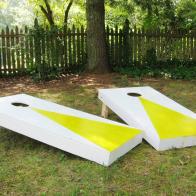The House
Diehard junkers Linda and Chris Bradford are the first to admit that the 1927 bungalow they rent in Long Beach, CA, is filled with trash. “We decorate with stuff people throw away,” says Linda. A rummager since college, Linda has a knack for spotting the potential in the dusty, the musty and the rusty. That’s apparent in the couple’s 1,100-square-foot seaside cottage, which they moved into a year ago after retiring and downsizing from a large house in Northern California.
In every room, Linda manages to stylishly arrange far-from-perfect reclaimed pieces — the wood is battered, the paint is chipped the metal is dinged — and the overall result feels light and airy, comfortable and casual. “I keep the walls neutral and bring in something upholstered from Pottery Barn. It all just works,” she says. Five years ago Linda turned her treasure-hunting hobby into a full-fledged business called Junk Style Design, offering customers who visit her stall at the Long Beach Antique Market the same kind of scavenged wares that fill her home.
Now she and Chris hunt down hidden gems year-round — including on two annual buying trips to Texas — and they’ll happily dig through salvage yards or shiver in chilly predawn rain waiting for estate sales to start. “There’s something special about things that have lived with, and been loved by, someone else,” says Linda. “Each piece has a history and a story to tell.”









